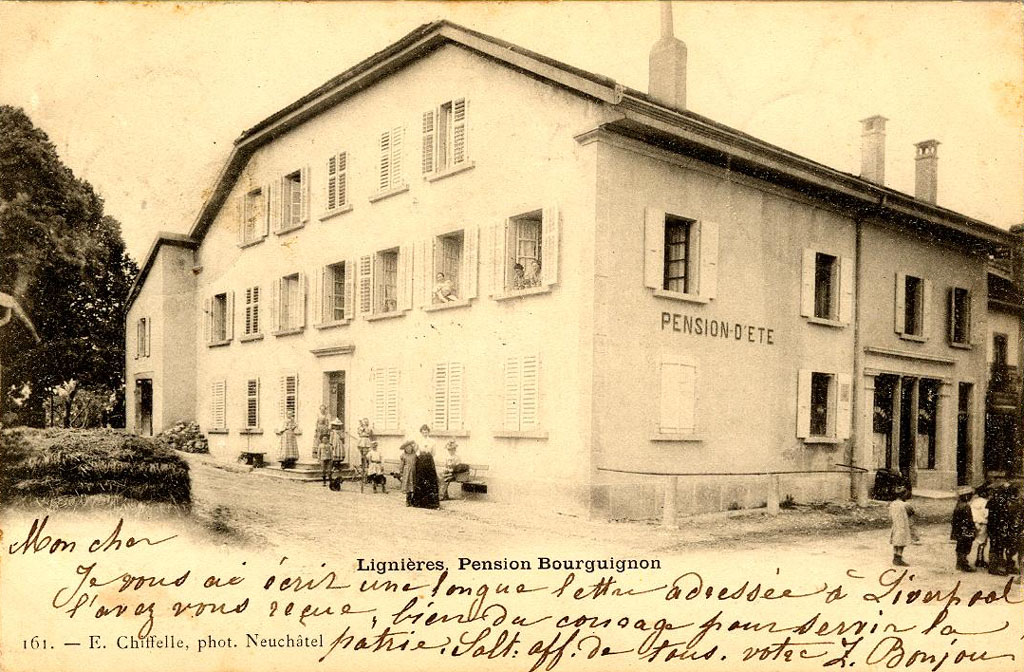

|
Lignières: Then and Now |
|
Move mouse over image for contemporary view; move mouse outside
for historical image.
If image doesn't change, click image to toggle between “then”
and “now” views.


The historical photograph is courtesy of M. Werner Löffel of Lignières, who kindly contributed images of his post card collection to the archives of the Fondation de l'Hôtel de Commune de Lignières.
|
by John Walker May, 2007 |
|
When last we saw this building (Rue des Hautes-Bornes 8, RACN 010-6456-00055) it was the post office. In this “then” view from twenty years before (the card was mailed in 1899) that's in the future, and it is a pension d'été (summer vacation hotel) owned and operated by the Bourguignon family. Holiday visitors and perhaps some of the staff are visible in the windows and in front of the southeast face. The kids in the street at the right of the “then” picture seem to be standing in line for something; in any case they, unlike the folks at the left, appear to be studiously ignoring the photographer.
In the “now” photo the southeast door has been enclosed by a porch; this is the entry to the dining room of the Restaurant de la Poste; the entry at the right from the Rue des Hautes-Bornes opens onto the less formal café. One of the specialities of the restaurant is pizza au feu de bois, so the truck parked in front is probably delivering firewood for the hungry pizza oven. The trees behind the building to the left in the “then” photo have given way to a blocklike reinforced concrete garage (RACN 010-6456-00057, Rue des Hautes-Bornes 10) today.
You may be curious why the sender has written the message on the picture side of the post card. At the time, the other side of post cards was reserved exclusively for the address and postage (hence the legend “Côte (sic) réservé à l'adresse”) on the flip side. Any message had to be written on the illustrated side, and pictures were generally composed with sufficient white space to accommodate a brief message. Before 1910, postal regulations had changed and half of the address side of the card could be used for a message, so this curious practice passed into history.
One thing which hasn't changed in the more than a century since this card was mailed is the efficiency of the post in central Europe. Note that from the postmarks on the address side the card was mailed in Lignières on November 4th, 1899, and arrived at the destination, Obrigheim Germany, the very next day, all for a 10 centime stamp! (What's the equivalent today? Between 1874 and 1967 the Swiss Franc [CHF] was convertible into 0.290322 grams [0.009334 troy ounces] of gold. At the early 2007 gold price of around US$625, 10 centimes [1/10 Swiss Franc] is about CHF0.72, US$0.60, or EUR0.45. By comparison,, a “PRIORITY” letter to Europe today costs CHF 1.30.)